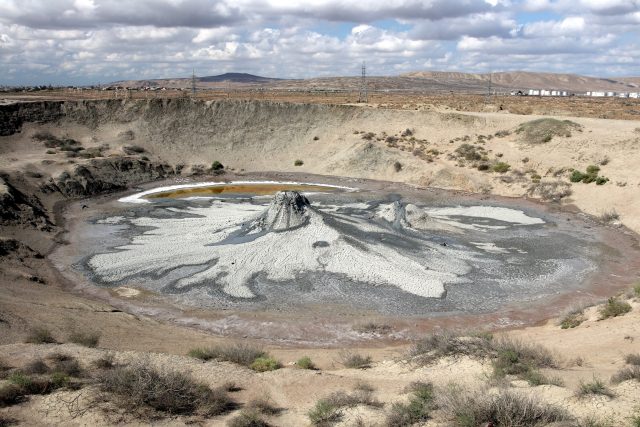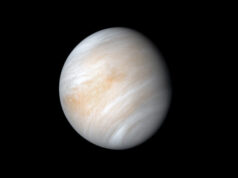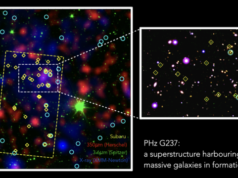The mystery of some lava-like flows on Mars has been solved by scientists who say they are caused not by lava but by mud.
There are tens of thousands of these landforms on the Martian surface, often situated where there are massive channels scoured into the surface by ancient liquids flowing downstream.
These channels are extremely long, extending many hundreds of kilometres in length and usually more than dozens of kilometres wide. They are believed to be the result of massive floods involving huge bodies of water comparable to the largest floods ever known to have occurred on Earth. When the water seeps into the subsurface it can emerge again as mud.
A European team of researchers has now simulated the movement of mud on the surface of Mars, with the results published in Nature Geoscience.
The research was led by the Institute of Geophysics at the Czech Academy of Sciences, and involved Lancaster University, the Open University and the Rutherford Appleton Laboratory in the UK, CNRS in France, DLR and Münster University in Germany, and CEED in Norway.
Find your dream job in the space industry. Check our Space Job Board »
Using the Mars Chamber at the Open University, the scientists recreated the surface temperature and atmospheric pressure on Mars as part of a simulation of conditions on both Earth and Mars.
Lionel Wilson, Emeritus Professor of Earth and Planetary Sciences at Lancaster University, said: “We performed experiments in a vacuum chamber to simulate the release of mud on Mars. This is of interest because we see many flow-like features on Mars in spacecraft images, but they have not yet been visited by any of the roving vehicles on the surface and there is some ambiguity about whether they are flows of lava or mud.”
The scientists performed experiments at low pressure and at extremely cold temperatures (-20°C) to recreate the Martian environment. They found that free flowing mud under Martian conditions behaves differently from on Earth, because of rapid freezing and the formation of an icy crust. This is because water is not stable and begins to boil and evaporate. The evaporation removes latent heat from the mud, eventually causing it to freeze.
Under Martian conditions, the experimental mud flows formed similar shapes to “pahoehoe” lava frequently occurring on Hawaii or Iceland on Earth, which cools down to form smooth undulating surfaces. In the experiment, this happened when liquid mud spilled from ruptures in the frozen crust, then refroze.
However, under terrestrial atmospheric pressure, the experimental mud flows did not form lava shapes, did not expand, and had no icy crust, even under very cold conditions.
This “sedimentary volcanism” has also been proposed for the dwarf planet Ceres which lies in the asteroid belt between Mars and Jupiter and may have a muddy water ocean beneath an icy crust.
Dr. Petr Brož, the leading author of the study, said: “We suggest that mud volcanism can explain the formation of some lava-like flow morphologies on Mars, and that similar processes may apply to eruptions of mud on icy bodies in the outer Solar System, like on Ceres.”
Provided by: Lancaster University
More information: Petr Brož et al. Experimental evidence for lava-like mud flows under Martian surface conditions. Nature Geoscience (2020). DOI: 10.1038/s41561-020-0577-2
Image: The collapsed circular crater of a mud volcano in Azerbaijan
Credit: Petr Brož Czech Academy of Sciences)











